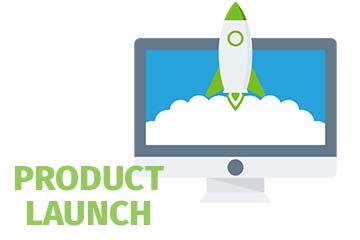
Launching a product is not as simple as creating it and releasing it into the world. Without a solid plan, bringing a product to market can prove impossible. In fact, Harvard research shows that there are over 30,000 new products launched every year, but over 80% of them fail. It’s safe to say that getting a product to market is far from guaranteed.
How to Get Your Product to Market
Know Your Competition
Conducting research on your competitor's products is all part of setting the foundation for success. Without thorough market research on the existing products and trends of your competitors, there is a high chance of failure before you really get going.
Record search terms and similar products, as well as the retail prices of possible rival products. Taking a walk around shops to get a feel for advertising and display styles will allow you to see what you’re up against.
Identify Your Target Customer
You must connect with your audience if you are going to sell to them. Research the market, find your ideal customer, and draw up buyer personas that detail things about them, such as their demographics and interests. Most importantly, figure out what their pain points are. If there is no demand for your product, it will never sell. Find the need.
By interacting with your target customer through social media groups and forums, you can get a grasp on their needs, allowing you to focus your goals.
Market Strategy
While your initial market research covered your competition, you will need to dive back in when it comes to devising your marketing strategy. Consider similar existing products, both online and in physical stores.
Figure out the most effective way to market your product. Should you focus on online promotion through social media ads? Will you approach catalogues and retailers? It’s smart to experiment with several avenues, tweaking the strategy to gauge what’s best. Direct response marketing is another option, which can deliver a huge ROI.
Patent Research
To make sure you don’t succumb to the pitfall of copyright infringement, visit the U.S. Patent and Trademark Office (USPTO) website and check out patents on items like the ones you want to invent. If it’s necessary, consult a lawyer to make sure your invention will be fully legal.
Develop a Prototype
When everything else is set, you can bring your idea to potential buyers and customers. Having a prototype will strengthen your proposition in several ways.
- It allows you to test the functions and perfect the design.
- It enables experimentation with different materials.
- It helps you describe and demonstrate your product to team members and potential partners.
- It makes people take the idea more seriously, showing that you are a professional with purpose.
The Last Step Is to Promote Your Product
And not just once. You can’t set and forget your marketing efforts.
After doing the hard work of bringing your product to market, you need to spread awareness. Among the best ways to do this include guest posting on related sites, using targeted social media ads, and getting industry influencers to review the product.
Social proof should not be underestimated.
In the end, a clear plan that follows all these steps will allow your idea to become a real, tangible product that sells well, and solves a need for your customer.







